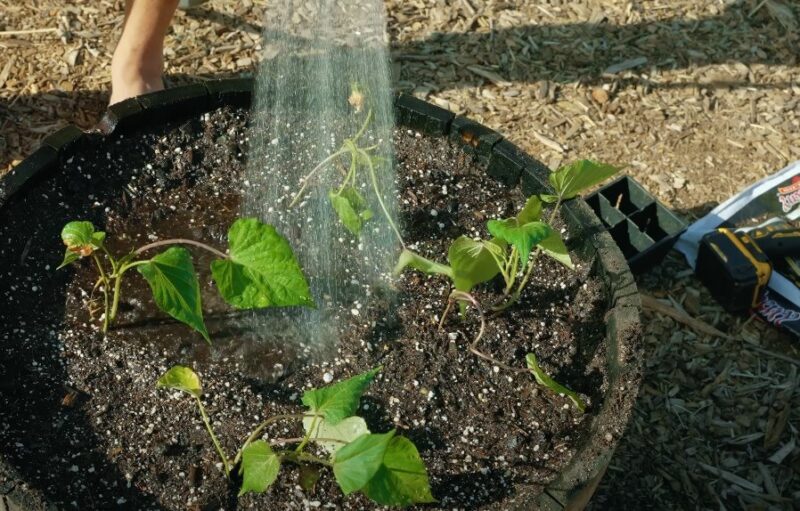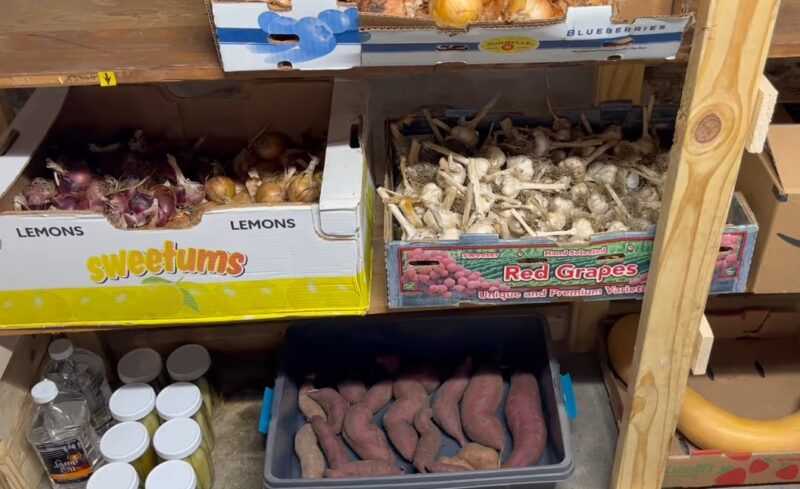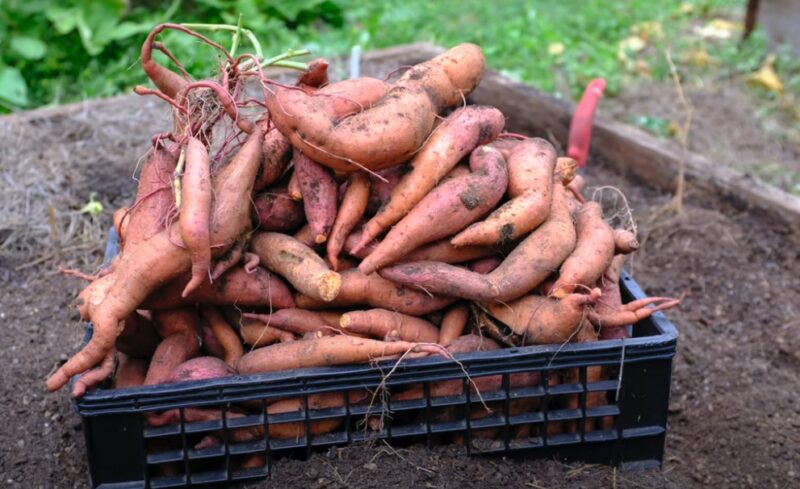Ever been curious about growing something in your garden that makes people stop and say, “What is that?” Look no further than the purple sweet potato.
This vibrant tuber, often called Okinawan sweet potato or Hawaiian sweet potato, is a real showstopper—not just in appearance, but also in taste and nutrition. But let’s not sugarcoat it.
Growing purple sweet potatoes takes time and attention. A lot of it. So, if you’re short on patience, maybe stick with tomatoes.
But if you’re up for a challenge that will pay off in bold colors and health benefits, let me walk you through the process.
The Right Variety for Your Garden

Before you start, you’ll need to decide which purple sweet potato variety is for you. There’s Stokes, Okinawan and Molokai, to name a few. They all share that signature purple hue inside, but there are some differences in flavor, texture, and maturity times.
Whichever variety you pick, remember one thing: they’re not fast. Plan on waiting at least 120 to 180 days before you can dig up your hard-earned spuds.
In other words, if you’re the type to start counting down the days to harvest before you’ve even planted the slips, purple sweet potatoes might not be for you.
Prepping for Planting (Soil and Climate)

Don’t Even Bother If It’s Cold
Let’s get one thing straight: purple sweet potatoes love warmth. They thrive when temperatures are in that cozy 70°F to 85°F range. Anything colder and your plants will sulk. If you live somewhere with frosty winters or unpredictable spring weather, you’ll need to wait for things to warm up.
You could also start them indoors, but that’s a whole different level of commitment. For those of us who live in temperate zones, outdoor planting has to wait until your soil is at least 60°F.
Frost is their enemy, so avoid the temptation to jump the gun on planting. If your area tends to get chilly unexpectedly, consider growing them in containers so you can shuffle them indoors.
Soil
Now, about the soil. They need something light, well-drained, and just a touch acidic—somewhere in the pH range of 5.5 to 6.5. Heavy clay? You’re going to have a bad time unless you add plenty of organic matter to improve drainage. Compost is your friend here.
Go ahead and give the soil a good fluff-up, since those tubers need space to grow. Tight, compacted soil will result in something more akin to garden disappointment than sweet potatoes.
Growing Slips from Tubers
Purple sweet potatoes are grown from slips, not seeds. If you’re used to the straightforward process of sowing seeds, well, brace yourself for a little more…oddity. Here’s how you do it:
- Pick a Healthy Tuber: Don’t grab the sketchy-looking potato from the back of the store. You want a plump, organic purple sweet potato that doesn’t look like it’s been through the wringer.
- Submerge (Sort of): Place the potato in a container with water, making sure only the bottom half is submerged. Toothpicks wedged into the sides help suspend the tuber halfway. It’s like balancing a boat on the surface of the water—except it’s a potato.
- Wait…And Wait Some More: Place the container in a warm, indirect light spot and wait. After 3-4 weeks, you’ll see slips start to form. When they’re about 6-8 inches long, you can detach and plant them.
If you thought this part was fast, welcome to gardening where the only thing growing quickly is your patience.
Planting Time
After weeks of babying your slips indoors, you’re finally ready to plant them outside. Just make sure you’ve picked a sunny spot—full sun for at least 6 hours a day is non-negotiable here.
Spacing and Soil Prep
Purple sweet potatoes need space, so don’t skimp here. Rows should be 3 feet apart, and each plant needs about 12 to 18 inches of elbow room. Now that your soil is well-drained and loose, it’s time to plant.
Bury those slips about 2-3 inches deep and pack the soil down a bit to give them some security. Water them thoroughly and apply mulch.
A good organic mulch—think straw or grass clippings—will help keep moisture levels consistent and discourage weeds from crashing your potato party.
Care and Maintenance

Once the slips are planted, your job is far from over. You’ll need to care for those plants like they’re prized possessions. Well, at least until they can fend for themselves.
Watering (Not Too Much)
Purple sweet potatoes are drought-tolerant, but don’t take that as a free pass to ignore them. Consistent moisture is key in the early stages and when the tubers are forming.
Water them once a week, but make sure the soil isn’t waterlogged. They like to be hydrated—not drowning.
Fertilizing
You don’t want to go overboard with fertilizer, especially anything high in nitrogen. Too much and you’ll end up with a ton of leafy vines and not many tubers.
Use a balanced fertilizer with a little extra potassium for root development. A light feeding when planting and a midseason boost is all they need.
Common Pests
View this post on Instagram
If you were hoping purple sweet potatoes were immune to pests, let me shatter that illusion. Here’s who might be coming after your crop:
- Sweet Potato Weevils: These insects can cause some real damage. Keep an eye out for them and consider using row covers to prevent infestations. It’s like keeping the birds off your porch.
- Fungal Issues: Like most plants, purple sweet potatoes can suffer from fungal diseases. Proper spacing, good air circulation, and keeping the foliage dry will help avoid this. Overhead watering is a bad idea—save the showers for the garden flowers.
Harvesting
Once the leaves start to yellow, usually after 120-180 days, it’s time to dig in—literally. But don’t wait too long, as frost can ruin all your hard work. Use a garden fork to loosen the soil and carefully lift the tubers.
Try not to puncture them unless you like seeing months of effort go down the drain. After harvesting, you’re not quite done. The tubers need curing to convert starches into sugars and improve their shelf life.
Stick them in a warm, humid spot (around 85°F) for a couple of weeks. It’s like sending your sweet potatoes to a spa, except they come out sweeter and ready for long-term storage.
Storing and Enjoying Your Harvest

After all that work, you’ve got a treasure trove of purple sweet potatoes. Store them in a cool, dark place—avoid refrigeration, as that ruins their flavor and texture. Properly stored, they can last for months, and the best part? They get even sweeter with time.
Now, onto the fun part: eating them! Purple sweet potatoes are versatile. Roast them, mash them, toss them into soups, or even blend them into smoothies. Just don’t be surprised when everyone marvels at the purple hue in their dinner.
Why Are Purple Sweet Potatoes So Popular?
Purple sweet potatoes are loaded with antioxidants—thanks to the anthocyanins that give them that rich color. They also offer a dense texture and an earthy sweetness that make them stand out from your average garden fare.
But the best part? Watching people do a double-take when you pull a basket of purple potatoes out of your garden.
Final Thoughts
Growing purple sweet potatoes isn’t a sprint—it’s more like a slow marathon. But once you’ve harvested your own batch, the payoff is sweet, vibrant, and totally worth the wait.
Just don’t expect to brag about it at your next garden club meeting until well after the season’s over.

